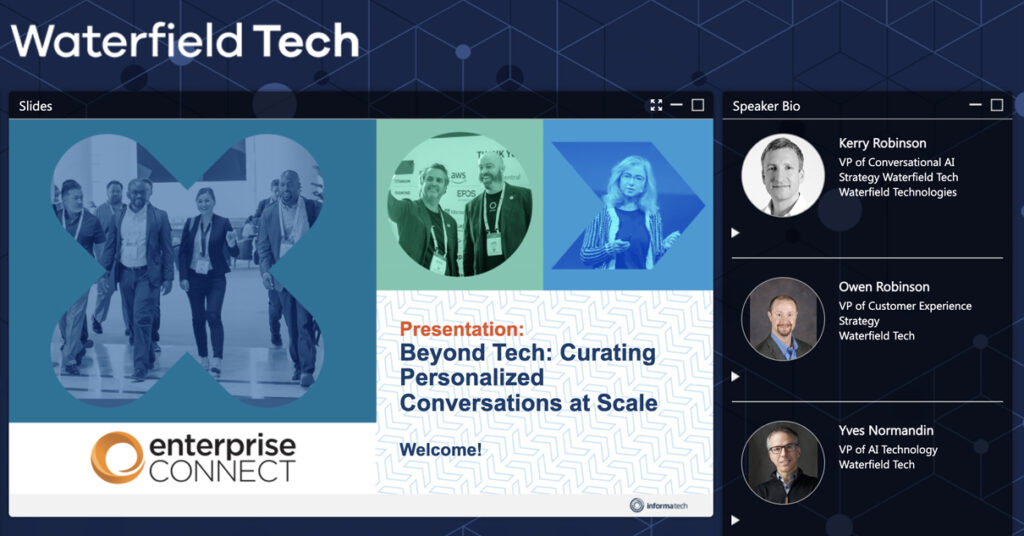Contact center professionals around the world are looking at how AI-based applications like ChatGPT could be deployed to support their agent workforce. ChatGPT uses deep learning to generate human-like text for responding to customers, based on various prompts. Developed by OpenAi, GPT-3 (Generative Pre-trained Transformer 3) –the foundation for ChatPT – is one of the most powerful language processing AI applications to date. But care is needed before adding this new tool to your customer experience (CX) platform.
“ChatGPT can be optimized for conversations on almost any topic,” said Owen Robinson, VP of customer experience strategy, Waterfield Tech. “It remembers previous interactions and takes chatbots to a while new level. But you can’t just deploy this tool on its own, because the AI application can also make things up.”
Robinson and his Waterfield Tech colleagues, Kerry Robinson, VP of conversational AI strategy, and Yves Normandin, VP of AI technology, were panelists at a recent Enterprise Connect virtual session, “Beyond Tech – Curating Personalized Conversations at Scale.”
Conversational AI chatbots can play a big role in personalizing customer conversations on the enterprise level. “You only have to train one virtual agent, and you can replicate it throughout the organization,” said Normandin. “That’s faster and more efficient than training each human agent.”
A bot that asks, “How can I help you?” can route a caller to the right human or virtual agent, added Kerry Robinson. “But it’s not easy to set up that initial bot and add new capabilities along the way.”
Tips for deployment
Before deploying ChatGPT or another AI-based bot, there are several key steps to take, according to the three panelists.
• Gather input from the business units. Don’t have the IT department unilaterally introduce chatbots. ‘You need to look at the organization’s business goals, talk with the business leaders and be sure that everyone is pulling in the same direction,” said Owen Robinson.
• Stay focused on the customer. When training ChatGPT, you need to have a customer-centric mindset, and design a model that responds to your customers’ questions and requests.
• Look at your current data and analytics. This is a data-driven process, said Normandin. So, you need the right analytics in place to identify areas of improvement in your CX process.
• Take control. Rather than let ChatGPT come up with its own responses to a caller’s questions, you need to control the potential answers, said Kerry Robinson. That means creating a menu or a set of limited choices for the bot rather than giving it the freedom to improvise.
• Treat bots as part of your workforce. Look at the tasks you want them to perform and the metrics to measure their performance, said Kerry Robinson. “Coach and mentor virtual agents, as you would with your human workforce.”
• Stay up to date. If you have deployed bots in the past, you need to review the responses on a regular basis in case your business or contact center platform has changed. “If your original bot is outdated, you could be replicating mistakes at scale,” said Normandin.

Summing up the conversation, Owen Robinson said, “With AI-based chatbots – or other CX applications – you can’t build it and walk away. New features are constantly coming out and you need to keep investing to make it better. That’s the best way for this technology to have a real impact on your business outcomes.”
